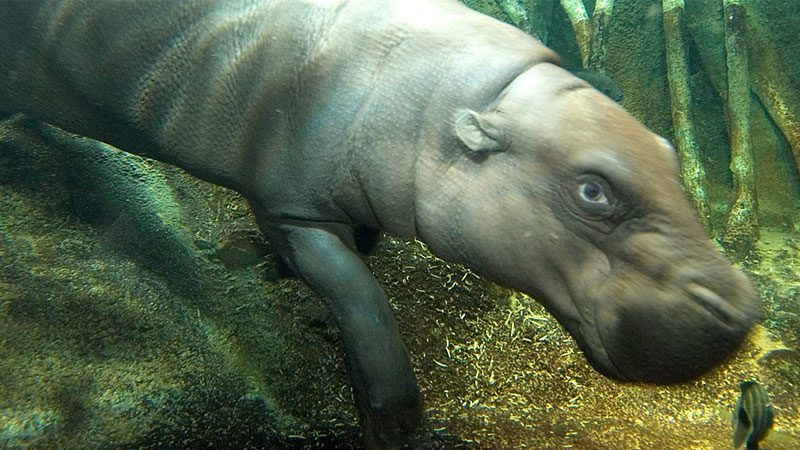Welcome to Lincoln Park Zoo’s new web app! Share your feedback

Pygmy Hippopotamus
Regenstein African Journey
Did You Know?
- Pygmy hippos may look like smaller versions of the common hippo, but they make up their own species within their own genus. The closest living relatives to hippos are whales and other cetaceans.
- They weigh about 10 times less than their larger hippo relatives. They have longer legs and less webbed feet because they are less aquatic than common hippos. They also only have one pair of incisors, while the common hippo has two or three.
- Their blackish skin also causes them to dehydrate more quickly, so the skin also oozes a pink fluid, called blood sweat, that makes them appear shiny or wet. It acts as a natural sunscreen.
Don’t See the Animals?
Why aren’t animals visible at all times? To promote positive animal welfare, we provide animals with choices. They can choose to spend time in areas that are out of public view.

Take an Animal Home with You
Overview
Scientific Name: Choeropsis liberiensis
Class: Mammals
Diet: Ferns, tender roots, grasses, herbs, stems, leaves, vines, vegetables, and fallen fruit
Range: West Africa
Endangered Status: Endangered
More Information
Pygmy hippos measure up to 5.7 feet in length and weigh between 350–600 pounds. They have a thin layer of greenish-black skin which helps them to keep cool. These mammals are most active from late afternoon to midnight and spend at least six hours of their day feeding. They also spend time wallowing in water on drier ground. They follow regular, well-defined trails through forests and swamps, marking them with dung they spread by wagging their tail. They are generally silent and rely on body language to communicate.
Pygmy hippos are solitary except for females with young or while breeding. Their gestation period is about 188 days and newborns appear more frequently in the dry season between November and January. Young pygmy hippos are born on land and kept hidden for up to five months. They become adults at 3–5 years of age.
